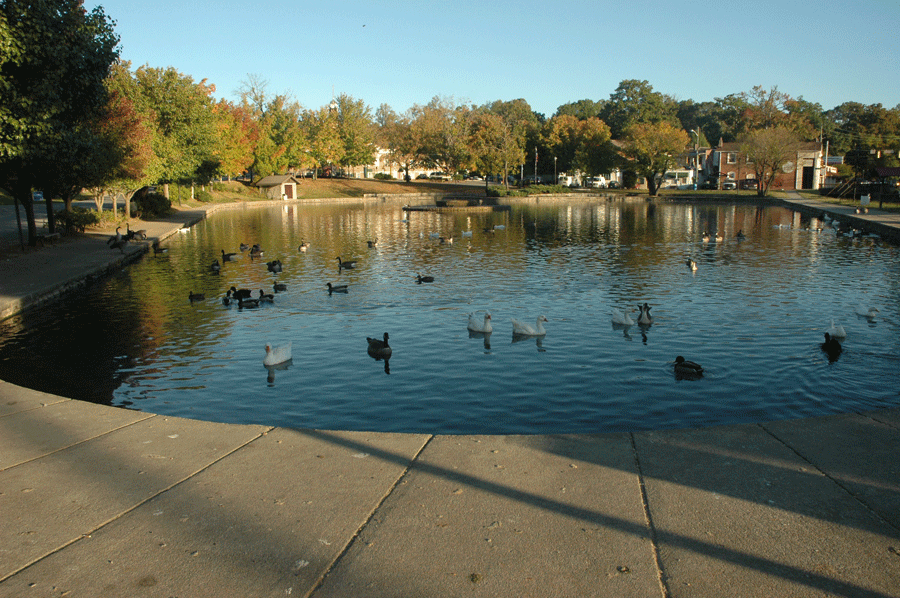
11. Fountain City Duck Pond. West of Broadway at Cedar Lane. Knox Co. Knoxville TN Full sun exposure. Spring Feed Pond N36 02.087 W83 55.967 963 ft 10/12/2014
Getting Ready:
1. Obtain a MicroAquarium™. It will have a glass tank, a stand holder and lid.
2. Using the color dots provided, code your tank as follows.
a. On the left hand side edge, place three colored dots in a vertical column as follows
i. The top dot will be the color designated for your lab section.
ii. The second dot will indicate the table you sit at during lab.
iii. The third dot will be the seat number at your table.
b. Now write your initials on the three colored dots.
3. Using a pipet, extract water from one of the containers on the lab bench or from water sources in the greenhouse or from the extraction you have created.
a. Extract enough water from the bottom of the container to fill the MicroAquarium™ tank about 1/3 full.
b. Extract the next 1/3 of water for your tank from the middle layer.
c. Then fill the rest of your tank with water from the surface.
4. Place your tank in its stand, then decorate it with some plant parts or mosses or other objects provided.
I added these plant parts and mosses to my aquarium:
Amblestegium varium (Hedwig) Lindberg. Moss.
Collection from: Natural spring. at Carters Mill Park, Carter Mill Road, Knox Co. TN. Partial shade exposure. N36 01.168 W83 42.832. 10/12/2014
Collection from: Natural spring. at Carters Mill Park, Carter Mill Road, Knox Co. TN. Partial shade exposure. N36 01.168 W83 42.832. 10/12/2014
Utricularia gibba L. Flowering plant. A
carnivorous plant. Original material from south shore of Spain Lake (N 35o55 12.35" W088o20' 47.00), Camp Bella Air Rd. East of Sparta Tn. in White Co. and grown in water tanks outside of greenhouse at Hesler Biology Building. The University of Tennessee. Knox Co. Knoxville TN.
10/12/2014
carnivorous plant. Original material from south shore of Spain Lake (N 35o55 12.35" W088o20' 47.00), Camp Bella Air Rd. East of Sparta Tn. in White Co. and grown in water tanks outside of greenhouse at Hesler Biology Building. The University of Tennessee. Knox Co. Knoxville TN.
10/12/2014